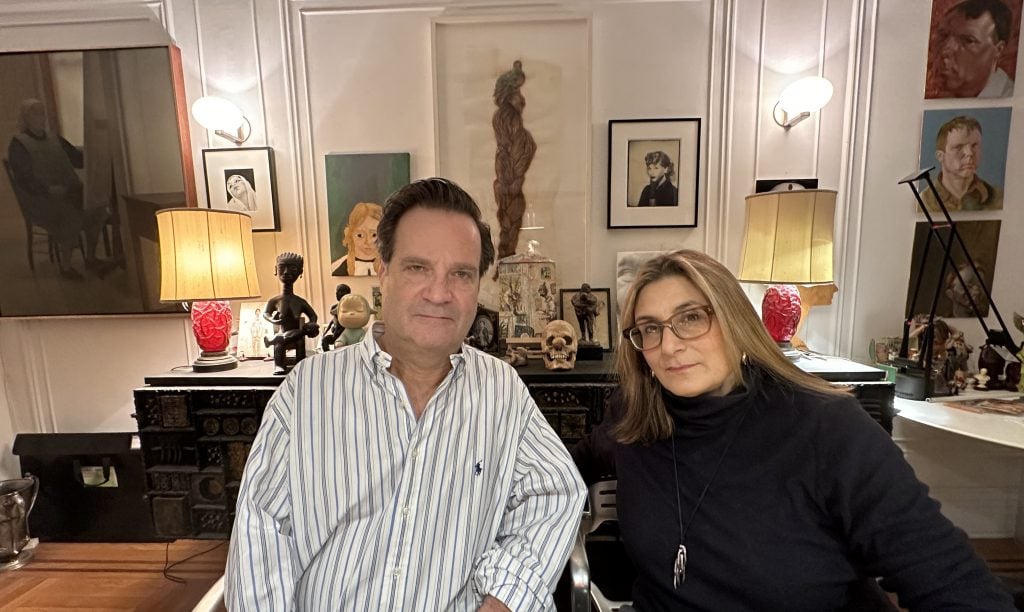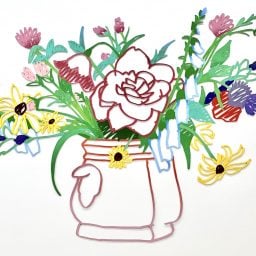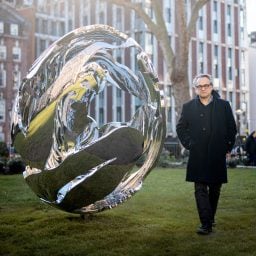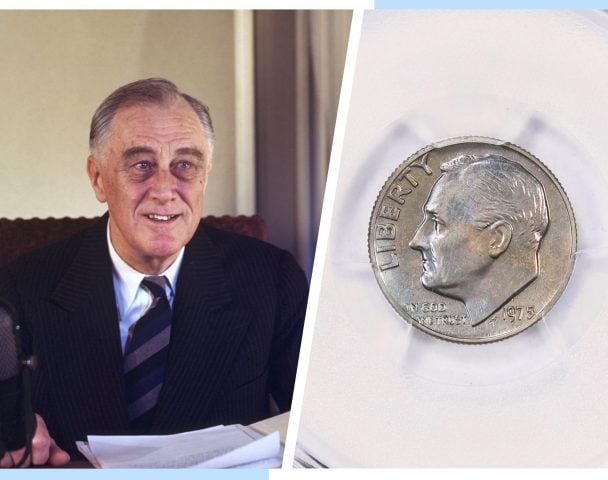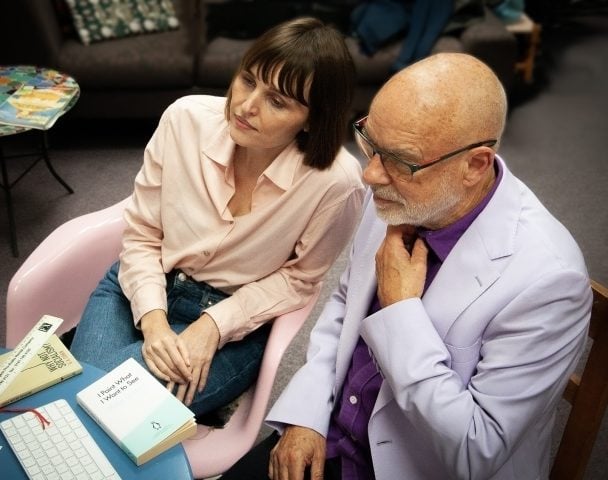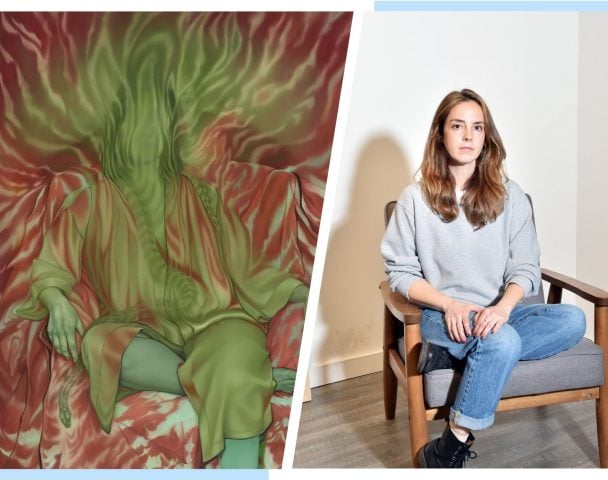Located in New York’s Chelsea district, BravinLee Programs is a project-driven gallery that, in addition to mounting traditional exhibitions, is perhaps best known for its facilitation and production of public artworks and artist collaborations—specifically their Artist Rug Program. Working closely with an artist or an estate, BravinLee has created numerous limited-edition hand-knotted rugs produced to the highest standard in Nepal, bringing that artist’s vision to the medium of textiles. BravinLee’s multifaceted approach to art and its presentation has resulted in several dynamic series that provide new insight into some of the world’s most famous artists and their practices.
We caught up with founders Karin Bravin and John Lee to learn more about their newest launches and most memorable artist collaborations.
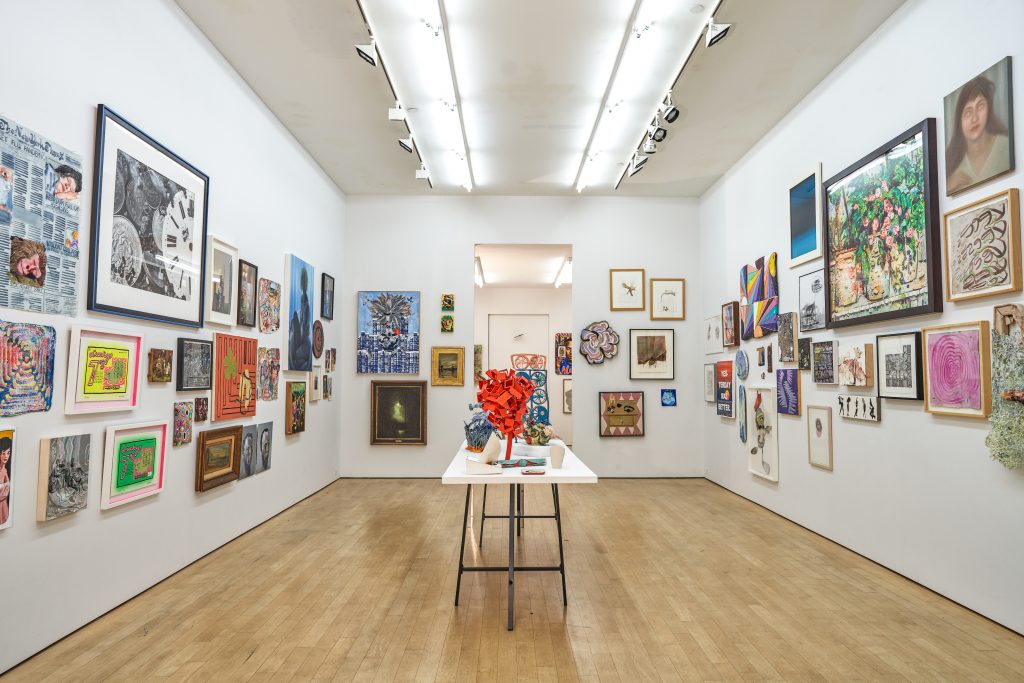
BravinLee Programs exhibition space, New York. Photo: George de Castro Day.
You first opened BravinLee gallery in 1991, before launching BravinLee Programs in 2006. Can you talk about what inspired this evolution, and what you do differently?
Karin Bravin and John Lee: Frankly, we were a little bored by the exhibition conveyor belt, the “put ’em up, take ’em down” malaise. We changed our name to “Programs” because the word “gallery” felt static and was no longer reflective of the breadth of our pursuits or how we wished to lead our lives as something more than glorified shopkeepers. We of course still believe in the importance of exhibitions and continue to have a space on West 26th Street in Chelsea—but don’t expect one show after another. We focus on producing limited-edition rugs designed by artists and public art initiatives. Karin curates a library-style vitrine with unique, handmade artist books and sketchbooks. John assists collectors in negotiating the best possible agreements with auction houses. The Museum Exchange, a new platform to help match up museums and collectors for donations, was John’s brainchild, though he’s no longer involved in its operation. We have an upcoming exhibition of drawings by the legendary political satirist and Trump tormenter Jesse Duquette.

Jesse Duquette, Putting The Fraud in Schadenfreude (2023). Courtesy of BravinLee Programs, New York.
You’ve collaborated with some of the biggest names in art, from Jonas Wood to Julio Le Parc, to translate their works to hand-knotted rugs. Do you have a favorite thus far? Or perhaps one that was particularly memorable?
Lee: We love all our collaborations equally! Especially memorable were the three we did with Christopher Wool. He biked up to the gallery—showed up helmet in hand—and we spent two days experimenting with his image files. The astonishing rugs he made are the result of his almost boyish wonder with process. His aesthetic DNA was perfectly suited for the task.
Visiting Nepal, where the rugs are made, has been a memorable experience, both personally and professionally. We’ve had the opportunity to meet our weavers, washers, and dyers. Karin and I have established a close connection to our colleagues at the mill. We will be hosting an event at the gallery on March 17, co-hosted by the U.S. Nepali Embassy. Ambassador Khatri will speak on the bond between Nepal and the U.S. through the export of their hand-knotted rug industry. We are proud of our GoodWeave membership. The GoodWeave label provides the best assurance that no child or forced labor was used in the making of carpets in South Asia.
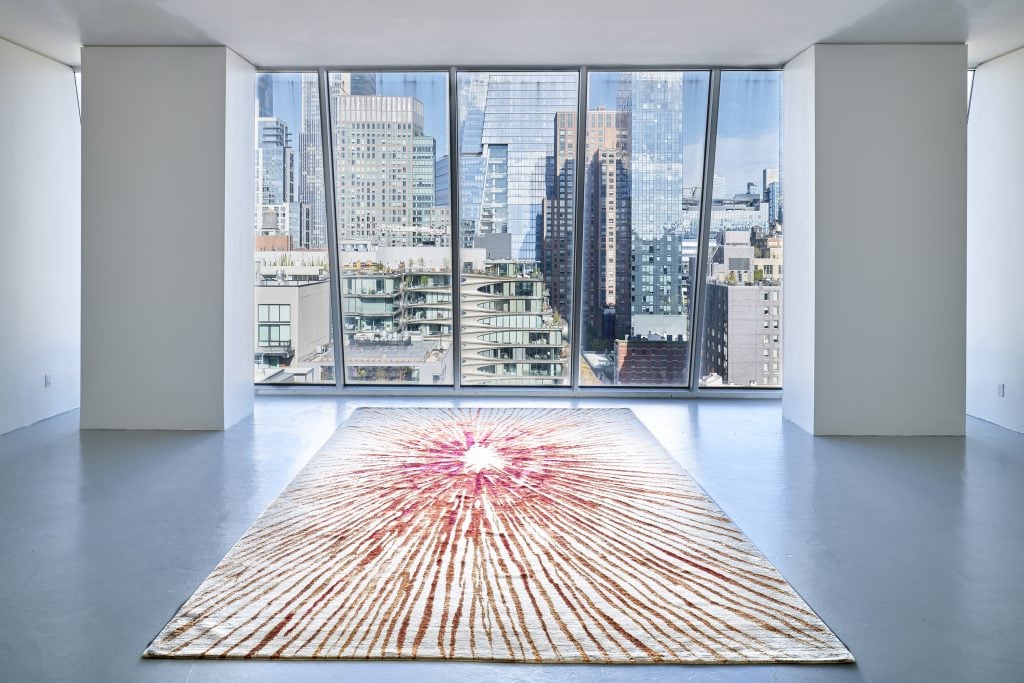
Louise Bourgeois, Ray of Hope rug. © The Easton Foundation/Licensed by VAGA at Artist Rights Society (ARS), New York. Photo: George de Castro Day. Courtesy of Hauser & Wirth.
Can you tell us about your next launch?
Bravin and Lee: Our Louise Bourgeois rug, Ray of Hope, launched this week. It involved an intense amount of experimentation in the dyeing process to achieve the necessary subtlety, sophistication, and vibrancy of her colors. It was like taking a sacred oath to respect the legacy of this great artist, and it was wonderful working with the Easton Foundation. We just produced a two-minute film featuring the rug and based on a poem Bourgeois wrote when she was 14.
We also recently launched an exceptional silk Wangechi Mutu and our third with Jonas Wood. We are working with Willie Cole on his second BravinLee rug—it’s going to be amazing.
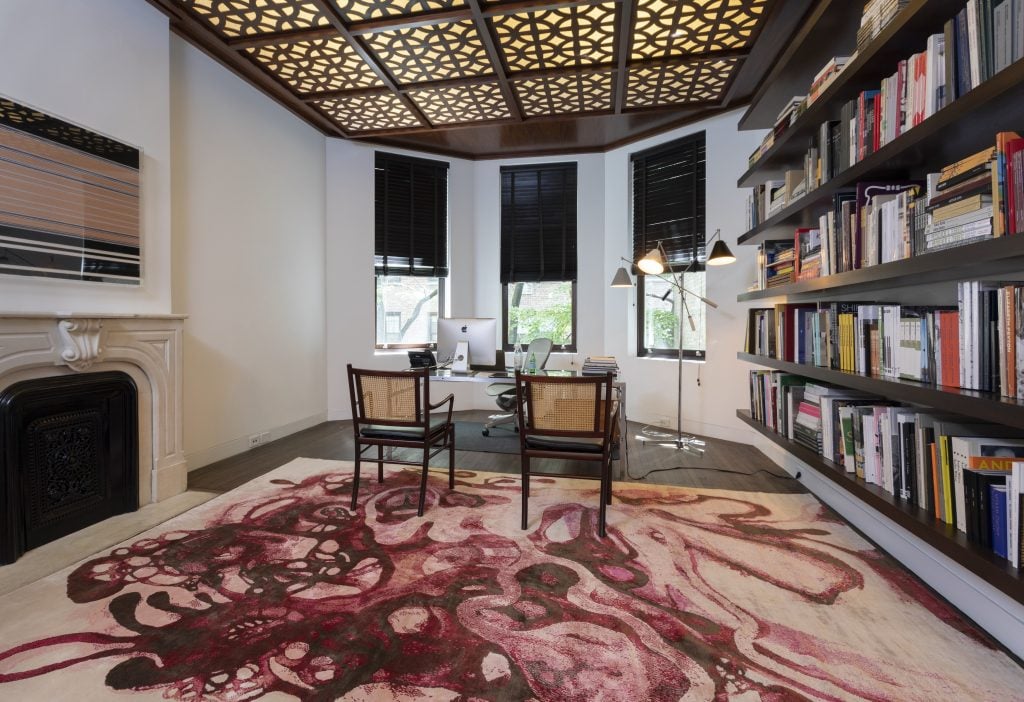
Wangechi Mutu rug at Gladstone Gallery. Photo: David Regen. Courtesy of BravinLee, New York.
You’re also currently working with Brendan Fernandes on a forthcoming project. What can you tell us about this collaboration?
Lee: We are currently developing a jacquard tapestry for the internationally acclaimed artist Brendan Fernandes for an exhibition at the Barnes Foundation in Philadelphia that opens this summer. A classically trained dancer, Fernandes uses the techniques of ballet and modern and contemporary dance to respond to and interact with an installation featuring the work of Black American sculptor William Edmondson. The jacquard machine, often acknowledged as the world’s first computer, was invented in 1804 and revolutionized the textile world.
BravinLee Offsite is dedicated to public art. What is the main mission or ethos behind this program?
Bravin: Public art often engages a viewer when and where they least expect it. I am inspired by the element of surprise when site-specific work meets the public in their own world and am most interested in work that is subversively integrated into the environment. Public art touches people who don’t even know they are seeking art and is a refreshing contrast to the four walls of our gallery space. Strange as this may seem, I enjoy sweating the details and relish the challenge of working with tight budgets typical of public projects. This allows me to collaborate successfully with the nonprofits and municipalities that want to establish public art programs without lavish budgets while seeking bang for their buck.
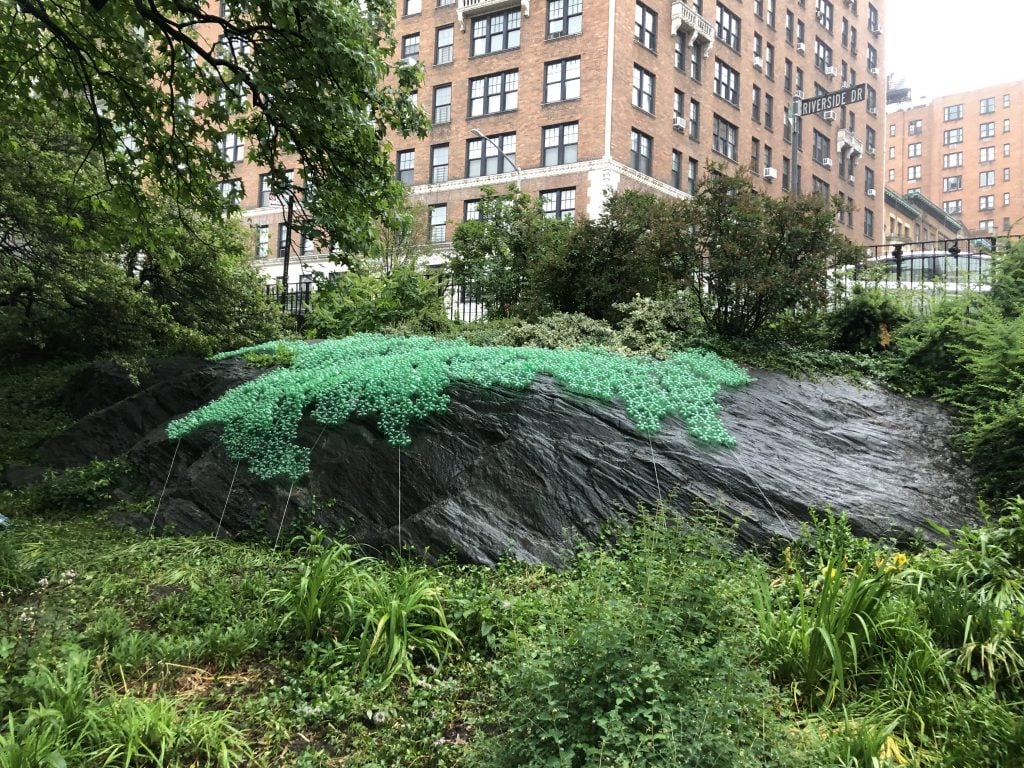
Installation view at Riverside Park, New York, of Jean Shin, Invasives (2020). Mountain Dew soda bottles, rivets, and cables. Photo: Karin Bravin. Courtesy of BravinLee Programs, New York.
Can you tell us about your most recent public art project?
Bravin: In the summer of 2021, I curated “Re:Growth,” a public art project spanning Manhattan’s Riverside Park from 66th to 181st Street. Among the 25 artists were Jean Shin, Glen Wilson, Dahlia Elsayed, Joiri Minaya, Valerie Hegarty, and Mary Mattingly. The show culminated with a spectacular floating sunset performance on the Hudson by artist Marie Lorenz. It was exciting for us to be able to place some of the works elsewhere following the exhibition; we brought Woolpunk’s piece to 2 World Trade Center; Letha Wilson’s work to Lewes, Delaware; and the Aldrich Museum exhibited David Shaw’s sculpture on its campus. I am currently working on a new project for the Lewes Delaware Public Art Commission and a future curatorial project for the Stirner Arts Trail in Easton, Pennsylvania.
If you could collaborate with any artist or estate that you haven’t yet, who would it be and why?
Lee: Klimt would make a nice rug—I’ve always wanted to work with Schiele and Vermeer, but we need their email addresses.
Learn more about BravinLee programs here.
